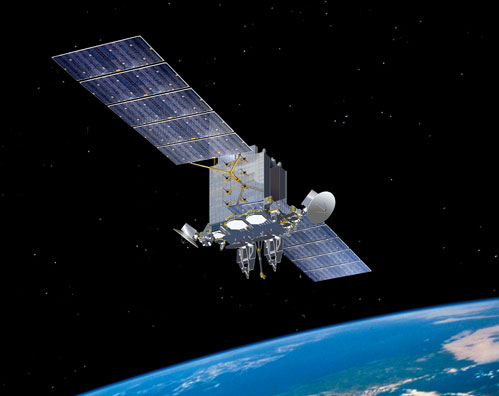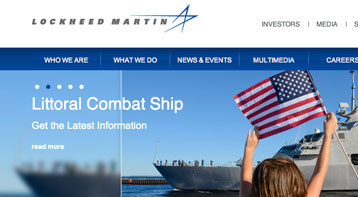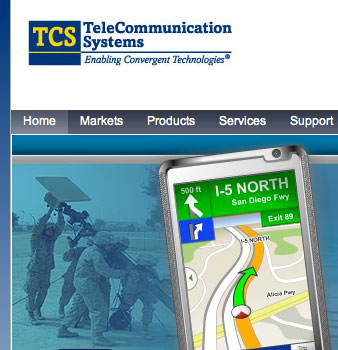
Advanced Extremely High Frequency (AEHF) anti-jam satellites
[SatNews] The shortage of SATCOM systems has been a perpetual complaint heard from military commanders during the wars of the past decade, as troops demanded more capacity not just for voice communications but also to share imagery and video.
TeleCommunication Systems, Inc. (TCS) (NASDAQ: TSYS), Northrop Grumman (NYSE: NOC) and Lockheed Martin (NYSE: LMT) today announced that they have teamed to produce highly affordable satellite terminals for protected communications on the move and at the halt.
The Low Cost Terminal (LCT) solution addresses the military's need for lower cost technologies and systems to enable protected and secure communications for tactical warfighters in theater. The three companies are operating under a collaborative agreement signed earlier this year for TCS to manufacture, market and sell LCT products under license from Northrop Grumman and Lockheed Martin.
The Team The LCT solution takes advantage of Northrop Grumman's and Lockheed Martin's proven knowledge and engineering experience in protected military satellite communications through Milstar and Advanced Extremely High Frequency (AEHF) anti-jam satellites, and builds on TCS' highly secure, deployable satellite communication systems, based on a modular architecture with plug-and-play interfaces and integrated logistics support.

News Facts:

The LCT Solution: The LCT solution enables assured, secure mission command at levels below the brigade combat team anywhere in the world. Developed entirely with company investment, the LCT solution includes two variants of equipment: a Protected Communications on the Move (P-COTM) terminal and a Protected SIPR/NIPR Access Point (P-SNAP) terminal for communications at the halt.
Protected Communications on the Move (P-COTM):

Protected SIPR/NIPR Access Point (P-SNAP):
Michael Bristol, senior vice president and general manager of government solutions, TCS, said: "This alliance is a remarkable opportunity for our three world-class technology companies to meet the challenge posed by the military: to invest in critical technologies and rapidly field needed communication capabilities for tactical military operations. Leveraging the companies' strengths, we have developed the LCT solution to provide assured mission command and freedom of action at a much lower cost."
Fred Ricker, vice president and deputy general manager, Northrop Grumman Aerospace Systems, said: "Military leaders have requested industry to self-fund technology development and new equipment as the fastest way to get much-needed capabilities to troops. We have more than met that challenge with this development. Our terminals can be produced for a cost significantly below currently fielded EHF terminals and can change the paradigm, making protected satellite communications widely available for tactical warfighters at all echelons."
John Miyamoto, vice president of Advanced Programs for Lockheed Martin's Military Space line of business, said: "As U.S. space-based technology becomes more and more advanced, the next challenge becomes ensuring that the men and women of our armed forces fully benefit from all our satellites have to offer. Harnessing the strengths of our LCT industry partnership, we can rapidly deliver lower-cost protected communications terminals that will enable warfighters to fully tap into the vastly improved global, survivable, highly secure, protected communications that AEHF delivers."

